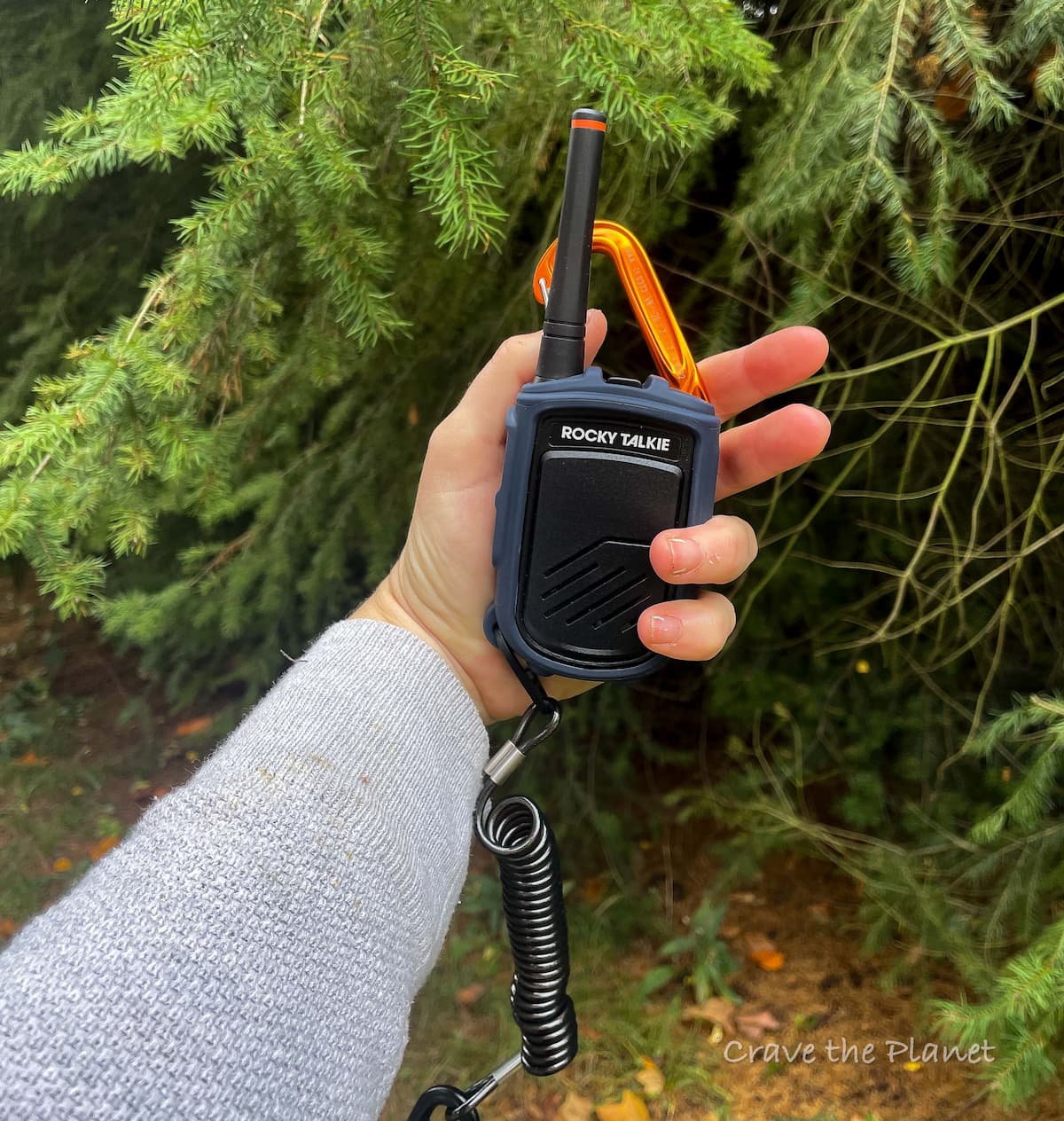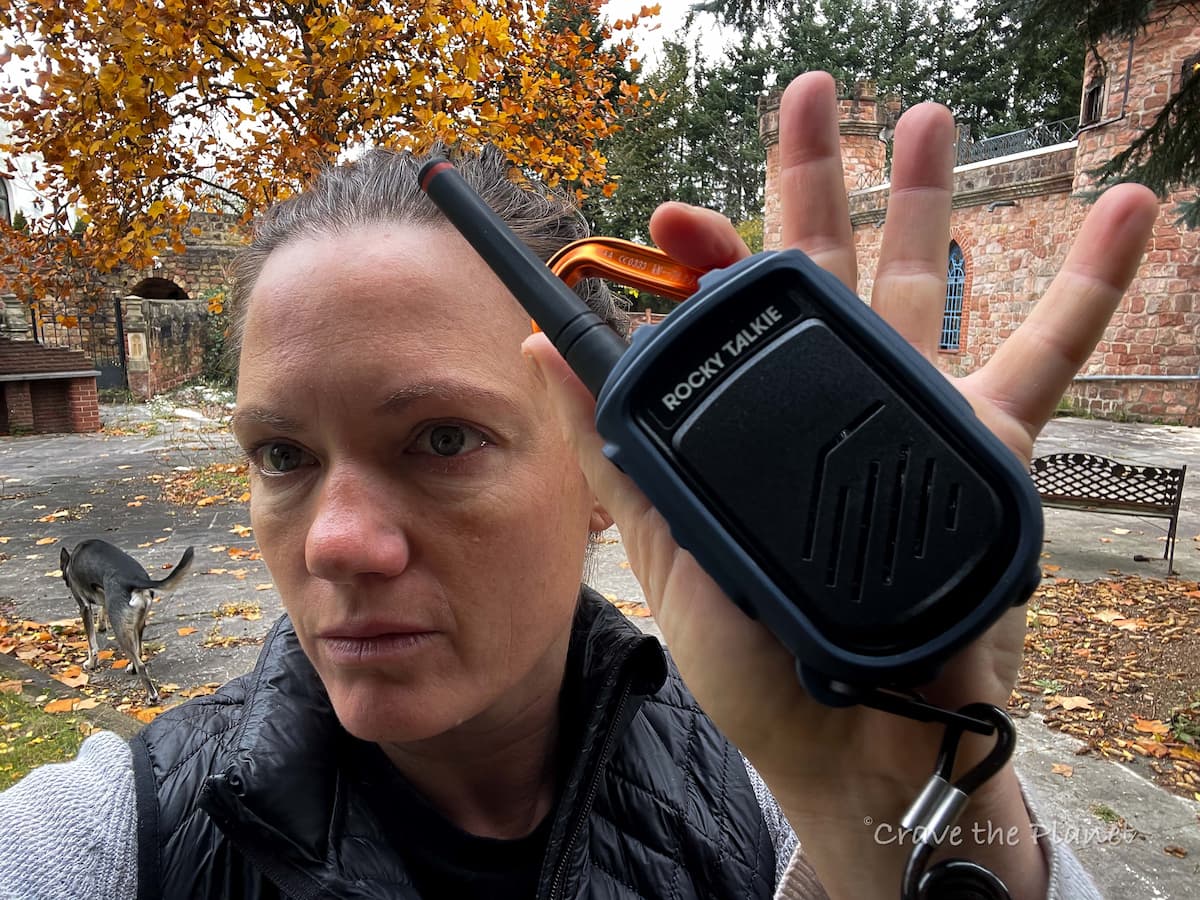Understanding the differences between Family Radio Service (FRS) and General Mobile Radio Service (GMRS) is crucial if you’re looking to use two-way radios for either personal or professional purposes.

FRS: Max 2 watts: Best for Outdoor Enthusiasts
FRS is a low-power and short-range frequency band that requires no license to operate. It’s typically used for family, long distance hiking, climbing, skiing and other recreational activities, being both an accessible and user-friendly option.
These two way radios are designed to offer an easy-to-use communication method without the need for a deep understanding of radio operations. They are often used for skiing in the backcountry and in places where the radio waves can bounce off mountains. They don’t work as well for construction operations or for long distances over flat territory.

GMRS: 5-50 Watts: Best for Professionals
On the other hand, GMRS requires a license from the Federal Communications Commission (FCC) in the United States. It offers higher power and longer range, which makes it suitable for business applications or individuals with a specific need for extended communication capabilities.
Unlike FRS radios, GMRS can also use repeater stations to increase their range, which can be especially useful in hilly or obstructed terrain.
Basic Differences Between FRS and GMRS

These differences concern licensing requirements, power output and range, and available channels and frequencies.
What sets apart an FRS radio from a GMRS radio?
This question is logical because FRS and GMRS radios have many similarities. In the past, combo radios that included both FRS and GMRS transceivers were commonly sold in the US marketplace.
However, in 2017, the FCC reformed the Part 95 Rules, which led to the discontinuation of these combo units. This change caused confusion among both new and existing users, prompting the question about the differences between the two services.
👉Despite being separate radio services, FRS and GMRS coexist within the 462-467MHz frequency range of the UHF band. They share the same 22 simplex channels and frequencies, allowing direct communication between FRS and GMRS radios.
With that…
A license is required to operate a GMRS radio, while an FRS radio is licensed by rule, commonly referred to as license-free.
The interoperability between FRS and GMRS services provides a unique advantage, allowing licensed and license-free operators to communicate with each other legally.

- Highlight: Mammut Caribiner, EASY operation
- Price: Moderate
- Range: 2 watts, 1-5 miles (35 max, but not likely)
- FCC license: Not needed
Summing up:
Despite their similarities, there are five primary differences between FRS and GMRS radios that are important to consider.
- FRS radios are limited to portable handheld models, while mobile and base station GMRS units are not allowed to transmit on channels 8-14 and can only receive on those channels.
- The maximum allowable wattage of an FRS radio is 2 watts, while the GMRS is allowed up to 5 watts on certain channels and up to 50 watts on others. Some brands like Rocky Talkie sell both and they can interoperate.
- FRS radios must have a permanently affixed antenna, while GMRS radios are allowed to have removable antennas and can be attached to aerials mounted remotely.
- GMRS has 8 additional repeater channels available to it, totaling 30 channels, while FRS does not have access to these repeater channels.
- In order to be considered an FRS or GMRS radio, it must be Part 95 type accepted by the FCC for that particular service. If it is type accepted for Part 95B, it is an FRS radio. If it is type accepted for Part 95E, it is a GMRS radio.
These differences determine the service the radio falls under and whether it requires a license or not.
Become a European Adventure Travel Insider in Just 5 minutes
✨Unlock Europe’s best-kept secrets with our free bi-weekly newsletter.

Licensing Requirements
FRS radios require no license to operate from the Federal Communications Commission (FCC). They are widely accessible and designed for short-distance, two-way communication.
In contrast, GMRS usage requires an FCC-issued GMRS license. To legally operate a GMRS radio or use GMRS channels, you must obtain this license, which is valid for your entire immediate family.
Power Output and Range
- FRS radios are limited to a maximum of 2 watts of power, which typically provides less range than GMRS radios.
- GMRS radios, on the other hand, can legally use up to 50 watts of power (the actual maximum Effective Radiated Power (ERP) may differ), translating into a significantly longer range, which can be useful in outdoor activities or other situations requiring broad coverage.
Channels and Frequencies
| FRS | GMRS | |
|---|---|---|
| Total Channels | 22 | 30 |
| Shared Channels | 22 | 22 |
| Exclusive Channels | None | 8** |
Both FRS and GMRS share 22 channels; however, GMRS offers an additional 8 channels exclusively for GMRS use.
Access to more channels and frequencies generally allows for clearer communication with less interference on GMRS.
Notably, channels 1 through 7 are shared by both FRS and GMRS, while channels 8 through 14 are FRS only, and channels 15 through 22 plus additional 8 repeater channels are for GMRS use.
Video Range Comparison FRS VS GMRS
Equipment Specifications

When considering FRS (Family Radio Service) and GMRS (General Mobile Radio Service) radios, you should pay close attention to their specific equipment specifications. These details will help you choose the correct device for your needs, whether you’re using it for recreational or professional purposes.
Radio Types and Features
FRS Radio: These devices are limited to 2 watts (W) of power and have a fixed antenna, which means you cannot replace the antenna to extend the range. FRS radios are suitable for short-distance communication, often no more than a mile or two in congested areas. They operate on channels 8-14 with a bandwidth of 12.5 kHz.
GMRS Radio: GMRS radios can transmit at higher powers, up to 50W, and often come with the option of a detachable antenna, allowing for greater range and clear audio quality. They require a license for legal operation in the United States. GMRS radios operate on 23 channels, with channels 1-7 overlapping with FRS. The bandwidth for these shared channels is also 12.5 kHz, while the GMRS-exclusive channels (15-22) use 20 kHz.
- Handheld Radio: Convenient and portable, both FRS and GMRS radios are available in handheld versions, commonly known as walkie-talkies.
- Mobile Radios: Typically installed in vehicles, these radios boast enhanced range and are more commonly associated with the GMRS band due to their higher power output.
Antennas and Accessories
Antenna: An essential part of radio equipment influencing your communication range and audio quality. FRS radios come with a fixed antenna, but with GMRS, you have the ability to install a more robust antenna.
Accessories:
- Audio Accessories: Improve your experience with headsets and earpieces for clearer sound.
- Power Accessories: Extra batteries and mobile power adapters keep you connected for longer.
- Carrying Accessories: Cases and belt clips for securing your radio while on the move.
Usage Scenarios and Legal Considerations

When choosing between Family Radio Service (FRS) and General Mobile Radio Service (GMRS) for your two-way radios, it’s crucial to consider where and how you’ll use them, as well as legal requirements that may affect you.
Mountain Sports
For activities like hiking, skiing, or climbing, FRS radios are often sufficient. They’re license-free and provide clear communication up to a few miles, which is ideal for staying in touch with immediate family or friends on separate trails.
Keep in mind, as an individual, you cannot expand power or modify antennas, which might limit range in mountainous terrain.
Personal vs Business Use
FRS is suitable for personal use, with no licensing needed for individuals or immediate family members. On the other hand, GMRS radios offer extended range and are permitted for business use.
If you’re part of an organization needing two-way radios for operational purposes, GMRS can be more fitting, though it requires an FCC license with a fee for non-family use.
Privacy and Interference
Privacy codes on both FRS and GMRS radios don’t encrypt communications but reduce the chance of others tuning into your frequency. However, complete privacy cannot be guaranteed.
You may experience interference from others on the same channel, especially in areas with higher radio traffic.
FCC Licensing and Regulations
GMRS requires an FCC license if you’re above the age of 18 and wish to leverage the higher power capabilities for broader communication range, or if you’re using the radios in a business context.
Licensing incurs a fee, but it covers the licensee and their immediate family, allowing various individuals to operate under a single license.
The current FCC regulations mandate that any organization or individual using GMRS abide by specific operational codes and frequencies.
Advanced Communication Features

When considering the capabilities of FRS (Family Radio Service) and GMRS (General Mobile Radio Service), it’s important to be aware of the distinct features that enhance two-way communication. Your choice between these services should take into account their ability to expand coverage and provide emergency services.
Repeaters and Expanded Coverage
FRS radios are limited to line-of-sight range; however, GMRS radios can tap into repeater systems to greatly increase their range. A repeater receives a signal and retransmits it at a higher power, which can significantly extend your communication distance.
Keep in mind, to use GMRS repeaters, you must have a GMRS license.
- Repeater Channels: GMRS has designated channels for repeater use, which can facilitate long-distance communication.
- Efficiency: Repeaters improve the efficiency and reliability of your signal, which is crucial in areas with obstructions.
Emergency and Location Services
GMRS radios often come with features that enhance user safety through emergency and location services. These services can prove invaluable in crisis situations where you need to communicate your position or summon help.
- Push-to-Talk (PTT) function enables quick communication with others, which is essential during an emergency.
- Location Information: Certain GMRS models can transmit your location information to assist in emergency response.
Purchasing and Ongoing Costs

When considering the acquisition of communication devices, you’ll need to weigh both the initial investment in radios and any ongoing expenses, such as licenses or upkeep. Understanding these costs is crucial to making an informed decision between FRS and GMRS radios.
Initial and Recurring Costs
FRS Radios:
- Initial Cost: Typically, FRS radios are less expensive and come in a variety of models. You can purchase an affordable Midland unit designed for casual use or a durable model suitable for consistent outdoor activity.
- Recurring Costs: No licensing fee or recurring cost is associated with FRS radios.
GMRS Radios:
- Initial Cost: GMRS radios are slightly more expensive, with power capabilities being a cost factor. Brands like Radio Shack offer higher-powered options for enhanced range and clarity.
- Licensing: A GMRS license incurs a fee, initially set at $35. This fee covers a family and is valid for 10 years. There’s no exam required, making the process straightforward.
Evaluating Quality and Performance
Quality and Clarity:
- FRS radios generally offer satisfactory audio quality for short-range communication.
- GMRS radios, particularly from well-known brands, often provide superior audio clarity over a larger range, which is essential for use in varied terrains and extended distances.
Testing Performance:
- Prior to purchase, test radios from companies like Midland and Cobra, if possible, to assess the audio quality.
- The range and clarity these two-way radios provide can vary, so it’s advisable to check customer reviews and product specifications related to performance.
Frequently Asked Questions

Before choosing a two-way radio system for personal use, you should be aware of the technical and regulatory differences between Family Radio Service (FRS) and General Mobile Radio Service (GMRS).
What are the differences in power limitations between FRS and GMRS radios?
FRS radios are limited to a maximum of 2 watts of power, making them suitable for short-distance communication. GMRS radios can exceed this power limitation, allowing up to 50 watts, which grants them a greater communication range.
Is it possible for GMRS and FRS users to communicate with each other on shared frequencies?
Yes, GMRS and FRS users can communicate with each other on shared frequencies. These are typically the first 22 channels found in multi-use radios.
Under what circumstances is a license required to operate GMRS equipment?
A license is required to operate on GMRS frequencies if the equipment is using more than 2 watts of power. FRS devices, however, do not require a license regardless of power usage.
How are the radio frequencies allocated for FRS compared to GMRS?
FRS is allocated specific frequencies within the UHF band that are shared with GMRS. GMRS additionally has separate frequencies that are exclusively for its use, which require licensing.
In terms of range and uses, how do FRS and GMRS radios typically compare?
FRS radios are limited in range due to their lower power, making them ideal for recreational use over short distances. GMRS radios offer a longer range, which suits them for both recreational and business purposes where more expansive communication is needed.
What should be considered when choosing between FRS, GMRS, and MURS for personal use?
When choosing between FRS, GMRS, and Multi-Use Radio Service (MURS), consider factors like communication range, licensing requirements, and the environment in which the radio will be used. FRS is good for casual, short-range communication, GMRS for longer range and more versatile use, and MURS for its VHF band that can better penetrate obstacles.
Recommended FRS Radio
What we like: This license free 2 watt two-way radio is SUPER simple to use right out of the box and perfect for climbers, skiers and hikers that want security and good communications.
- Pros: 4 days battery life, Simplicity, 5 mile Range, 2 year warranty, designed in Colorado
- Cons: Mic is extra, not cheap
Note: This high quality, yet mid-priced walkie talkie is our top pick for the Outdoor set.
We hope this guide filled with interesting information about the difference between FRS vs GMRS radios has given you the proper information to explore more Outside.

Author profile: Morgan Fielder is a Doctor of Physical Therapy and passionate hiker who believes in exploring the world on foot with good food. Follow her journey as she shares science-based hiking tips and advocates for sustainable tourism.

